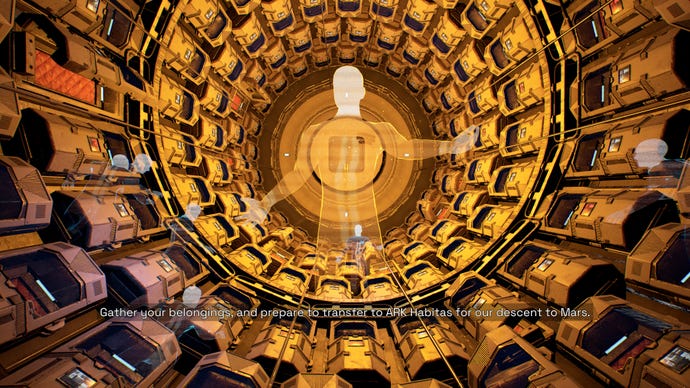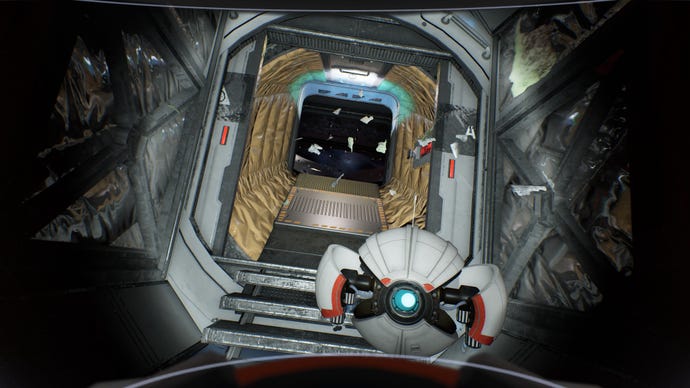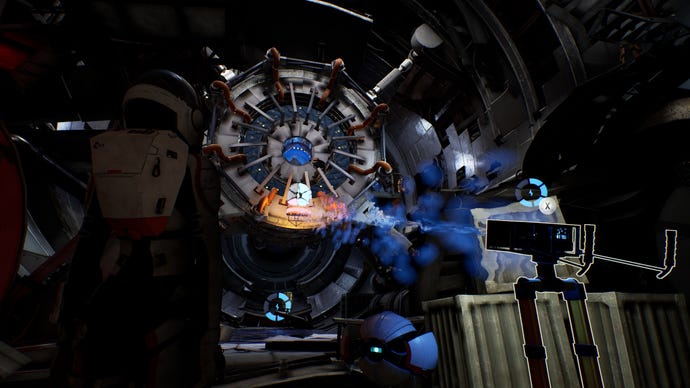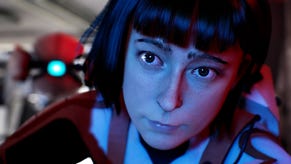Deliver Us Mars review: a family and a planet in crisis
Rad planet?
With the world continuing to disintegrate around us in real-time, it can be tempting to cast our eyes skyward in the hope of finding a better future. If KeokeN's Deliver Us games are anything to go by, though, life in outer space isn't all that peachy either. In Deliver Us The Moon, you may remember the scientists in charge of the moon's Earth-saving energy beam tech ended up having a bit of a Rapture moment, sabotaging all their good work (and the future of Earth in the process) and buggering off to goodness knows where to start life afresh in their newly birthed utopia. In its sequel, Deliver Us Mars, you find out those rogue astronauts didn't actually go that far at all. Yep, they hopped on over to the red planet and set up shop there, and when a strange transmission comes through revealing their location, it serves as the catalyst to send yet another crew into space to go and investigate.
This time, though, you're right at the heart of its central conflict. By casting players as Kathy, the daughter of one of those rogue astronauts, Deliver Us Mars tells a much more fraught and personal tale of what kind of future humanity should be pursuing: should we, in fact, be turning our efforts toward a life in outer space, or should we be doing everything in our power to try and save the dire, pretty much almost dead husk of a planet we call home?
These questions are teased out in much the same way as Deliver Us The Moon, with Kathy stumbling on plentiful hologram recordings detailing key moments of what took place on this new Mars colony as she and her team explore its seemingly abandoned innards. As you can probably guess, things ended up hitting the proverbial fan here too, and following that breadcrumb trail of disorder and destruction forms much of the narrative backbone of your adventure.
But there's a deeper tension at play here bubbling away inside Kathy herself that brings a welcome sense of depth and urgency to the mission at hand. Her youth and inexperience are at constant loggerheads with the rest of her more seasoned teammates - including her commander and older sister Claire - and the urge to go off-piste and find her missing dad gives Deliver Us Mars a much gooier, human core than Moon could ever hope to achieve with its silent, first-person protagonist. Indeed, even underneath some slightly stiff animation and rubbery facial expressions, Ellise Chappell's performance as Kathy is as sharp, witty and endearing as anything you'd find in flashier blockbusters, and the similarly strong voice work of Neil Newbon as Kathy's dad Isaac deftly unravels the defeat, mania and desperation of a man caught between a rock and a hard place.

Between these critical story beats, Deliver Us Mars is a mixture of tactile platforming and intricate beam puzzles, ditching the frustrating stealth sections and slightly contrived oxygen dashes of Deliver Us The Moon for a more sedate and considered style of space trekking. Kathy's jump is perhaps a touch floaty in places, but all is forgiven the moment she brings out her climbing axes. She'll use these to scale sheer rock surfaces, padded spaceship walls and icy cliff faces before she's done, bringing back old memories of Crystal Dynamics' Tomb Raider trilogy.
But I reckon Lara Croft could stand to learn a thing or two from Deliver Us Mars on this front, as instead of spidering up each wall with a simple push of the analogue stick, Kathy must position each of her arms manually, anchoring her pickaxes into place with a pleasing thunk and squeeze of the trigger. Release those triggers too early and Kathy will fall to her doom - although generous checkpointing means very little is lost if you do happen to slip up.




It's a wonderfully tactile experience, and the methodical hook, sink and shuffle lends a real weight to Kathy's journey, regardless of whether she's making her way down a relatively innocuous canyon wall or scrambling up the side of a spaceship that's crumbling at every step. There are no breezy, action hero stunts on this deadly planet, and getting the job done without passing out from a lack of oxygen helps to keep the pressure on. You may not be making mad dashes for yellow oxygen cannisters anymore, but watching the lights on the back of Kathy's suit gradually tick down with sinister beeps still piles on the dread and sense of 'man alive, I better hurry it up before I cark it' sort of thing.
The beam puzzles, on the other hand, are arguably the creakiest part of Deliver Us Mars' otherwise fine space vessel. Their complex networks of fiddly, line of sight energy beams not only seem increasingly incongruous and impractical when you're surrounded by never-before-seen marvels of human engineering, but from a pure puzzle-solving point of view, they also never really evolve in particularly satisfying ways. They tax the brain well enough in the moment, and only one had me truly wracking my brain for a solution (and that was mostly because it involved going through a room that looked a veritable death trap at first glance). But from start to finish, you're finding the same old sight lines for these things, and using their accompanying contraptions to either split or dampen the strength of the signal to find the right power requirement. It's a shame these didn't get to develop more over the course of Mars' eight hour run-time, and stood next to Moon's location-specific puzzles, they can't help but feel a little flat by comparison.

Kathy's floating robot pal Ayla also gets a bit of a short straw here compared to their Moon counterpart Ace. Not only do they feel side-lined here in favour of more beam puzzles, but the few puzzle assists Ayla does provide - hovering through vents to open locked doors and peeking into different rooms - are lifted pretty much wholesale from Mars' predecessor. As such, Ayla's abilities never really move forward as you might expect them to in a sequel, and they end up feeling more like a glorified hologram projector than anything else.
Ultimately, though, the knotty drama of Deliver Us Mars was enough to power me through these minor niggles, even if its broad brushstrokes of 'utopia gone awry' is a story we've heard several times before. Its macro planetary disaster is beautifully mirrored in its micro family dilemmas, and the performances of Chappell and Newbon, along with Bryony Tebbutt as Claire, and Nicole Tompkins and Danny Ashok as fellow crewmates Sarah and Ryan all come together to form a moving portrait of past regrets, bruised egos, misguided futures and what 'doing the right thing' actually means (i.e: sticking those beam puzzles straight into the airlock).
It certainly shows greater signs of life than Deliver Us The Moon (which I'd still recommend playing beforehand if you have the chance, even though it's not strictly necessary in order to appreciate what's going on here), and while it might not be as polished or glamourous as other space games launching this year, it's a worthy continuation of KeokeN's thoughtful sci-fi series nonetheless. The future it depicts may be bleak, but this is a world you'll be glad to escape to, even if it's only for a little while.









